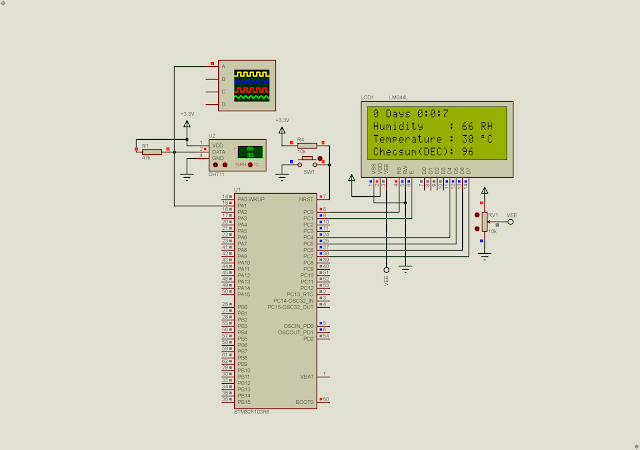Multiplexing Display could be driven form controller digital output pins without any additional memory chips. However it needs at least one digital output port. In this example, I use two SN74HC164 shift register chip to store seven-segment display data, and drive each commons. It makes a multiplexing 7-Segment display that use only three micro-controller digital output pins.
For more example of using SN74HC164 chip you can check these links:
- ATMega32 Interfaces To SN74HC164 Shift Registers
- ATMega32 SPI Interfaces To SN74HC164 And LED
- ATMega32 SPI Interfaces To SN74HC164 And LCD Using 3 Pins
- ATMega32 SN74HC164 Seven Segments Display And Switch Interfacing
- ATMega32 And SN74HC164 Serial Seven Segment Display
There's an input button to count the number of input pulse. It's active low input. Optionally, I use a signal source with the frequency around 5Hz as an input signal instead of push button.
Simulating Program |
The program activate each digits before it reset the registers to refresh display data without conflicting the display output.
Click here to download its source file.





No comments:
Post a Comment